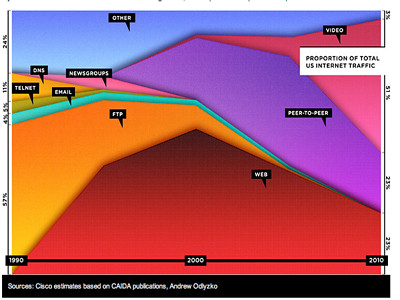 Is the Internet a communications or content distribution network?
Is the Internet a communications or content distribution network?That's a rhetorical question, but an important question, nevertheless, since governments often regulate "communications" networks differently than they do "content delivery networks" (the generic function, not the business of CDNs).
Even traditional language "any to any" speaks more to the original communications function than the ways most of the Internet actually is used as a content acquisition medium these days.
The Named Data Networking project hopes to evolve the Internet's fundamental protocols in ways that acknowledge the key change by adding more security. But there is an equally-important change: the shift in Internet purposes from communication to content delivery.
"Recent growth in e-commerce, digital media, social networking, and smartphone applications has resulted in the Internet primarily being used as a distribution network for content," the NDN project says.
Aside from the matter of security and protocols, that shift to content delivery could have important business and regulatory implications.
One often hears it said that regulators should not allow the "Internet to become cable TV," That typically occurs in the context of discussions about network neutrality.
The notion is that the Internet should not become a media business.
The problem is that the Internet has become the enabler for precisely those developments.
Many current and future battles will occur, around that change. The Internet originally was a narrowband communications network. Now it is a broadband media consumption network.

No comments:
Post a Comment